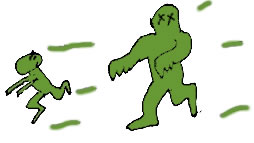Many such members of the Archaea domain live in extreme environments. However, they’ve also been found in less extreme contexts: soils, marshland and oceans. In fact, they may be one of the most abundant groups of organisms on the planet. Scientists believe they play an important role in both the carbon and nitrogen cycles, so understanding how they work is of considerable benefit.
One of the consequences of the DNA sequencing revolution involved a revision of the tree of life. It became clear that even though certain organisms look like each other, their DNA could be quite different. So Carl Woese proposed that life be organised into 3 domains (Bacteria, Archaea and Eukarya) rather than the traditional 5-kingdom model.
The five kingdoms were generally grouped into Eukarya or Prokarya. Eukaryotes (animals, plants, protists and fungi) are defined by their possession of a cell nucleus. The cells of prokaryotes (principally bacteria) on the other hand, lack this nuclear membrane. Archaea seem to be a half-way house: superficially they look like bacteria, but their DNA is more similar to that of eukaryotes.
Despite having the smallest non-viral genome ever sequenced, N. equitans has proteins that are strikingly similar to the histone proteins within eukaryotic cells. Scientists at the University of Regensburg in Germany have been studying one such protein in this parasitic microbe. It is most similar to histone H3: one of the five kinds of histone protein involved in the structure of chromatin in eukaryotic cells.































